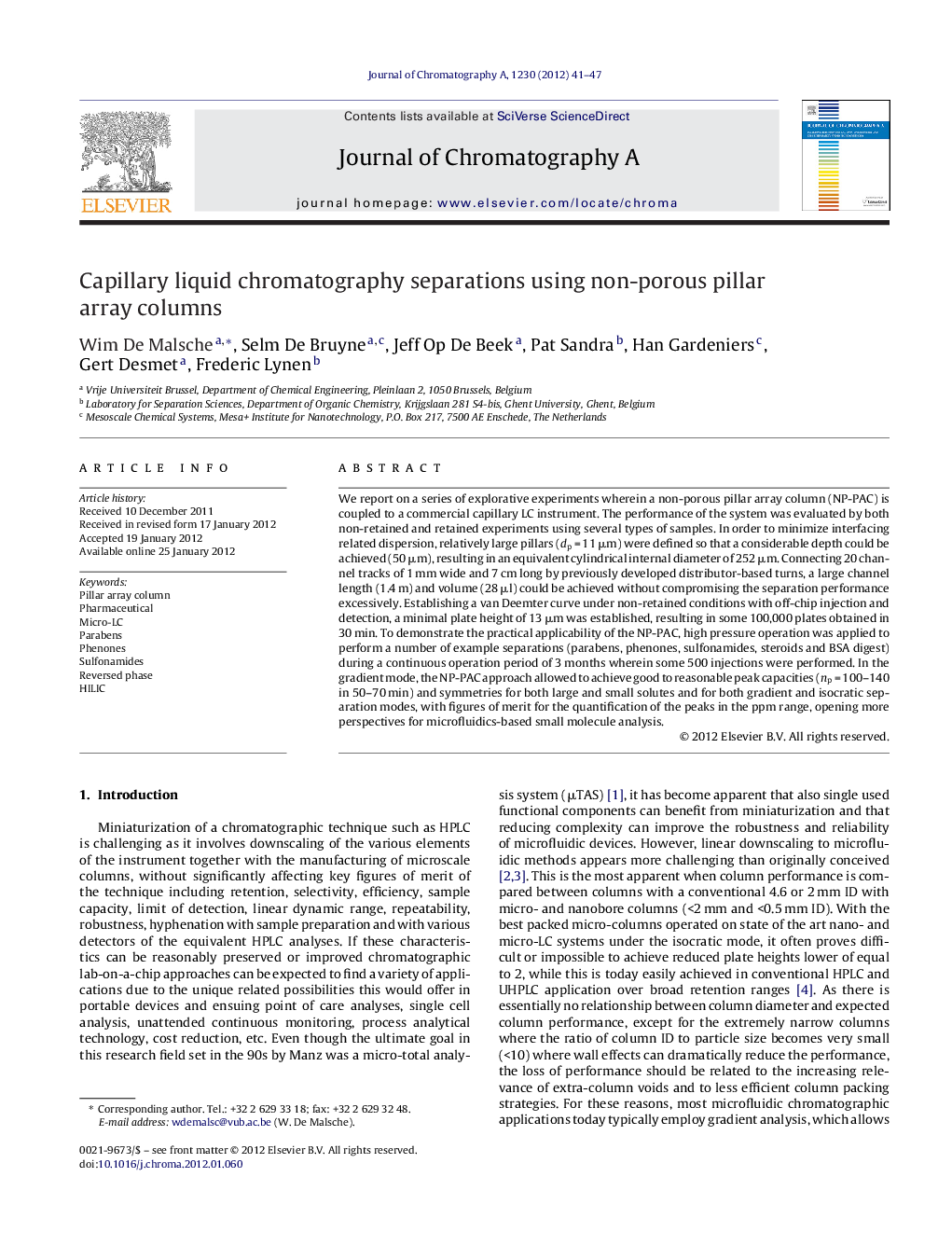| Article ID | Journal | Published Year | Pages | File Type |
|---|---|---|---|---|
| 1206603 | Journal of Chromatography A | 2012 | 7 Pages |
We report on a series of explorative experiments wherein a non-porous pillar array column (NP-PAC) is coupled to a commercial capillary LC instrument. The performance of the system was evaluated by both non-retained and retained experiments using several types of samples. In order to minimize interfacing related dispersion, relatively large pillars (dp = 11 μm) were defined so that a considerable depth could be achieved (50 μm), resulting in an equivalent cylindrical internal diameter of 252 μm. Connecting 20 channel tracks of 1 mm wide and 7 cm long by previously developed distributor-based turns, a large channel length (1.4 m) and volume (28 μl) could be achieved without compromising the separation performance excessively. Establishing a van Deemter curve under non-retained conditions with off-chip injection and detection, a minimal plate height of 13 μm was established, resulting in some 100,000 plates obtained in 30 min. To demonstrate the practical applicability of the NP-PAC, high pressure operation was applied to perform a number of example separations (parabens, phenones, sulfonamides, steroids and BSA digest) during a continuous operation period of 3 months wherein some 500 injections were performed. In the gradient mode, the NP-PAC approach allowed to achieve good to reasonable peak capacities (np = 100–140 in 50–70 min) and symmetries for both large and small solutes and for both gradient and isocratic separation modes, with figures of merit for the quantification of the peaks in the ppm range, opening more perspectives for microfluidics-based small molecule analysis.
► Explorative separations with a non-porous pillar array column were performed. ► An equivalent cylindrical diameter of 252 μm (length 1.4 m) was produced. ► Off-chip injection and detection was performed, yielding still 100,000 plates. ► Peak capacities of up to 150 were obtained within 70 min.
